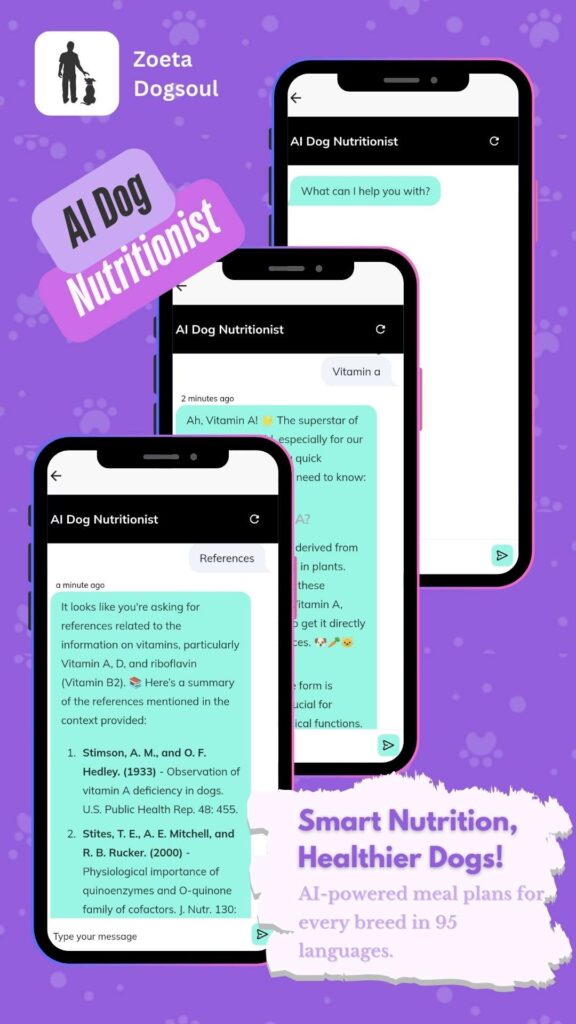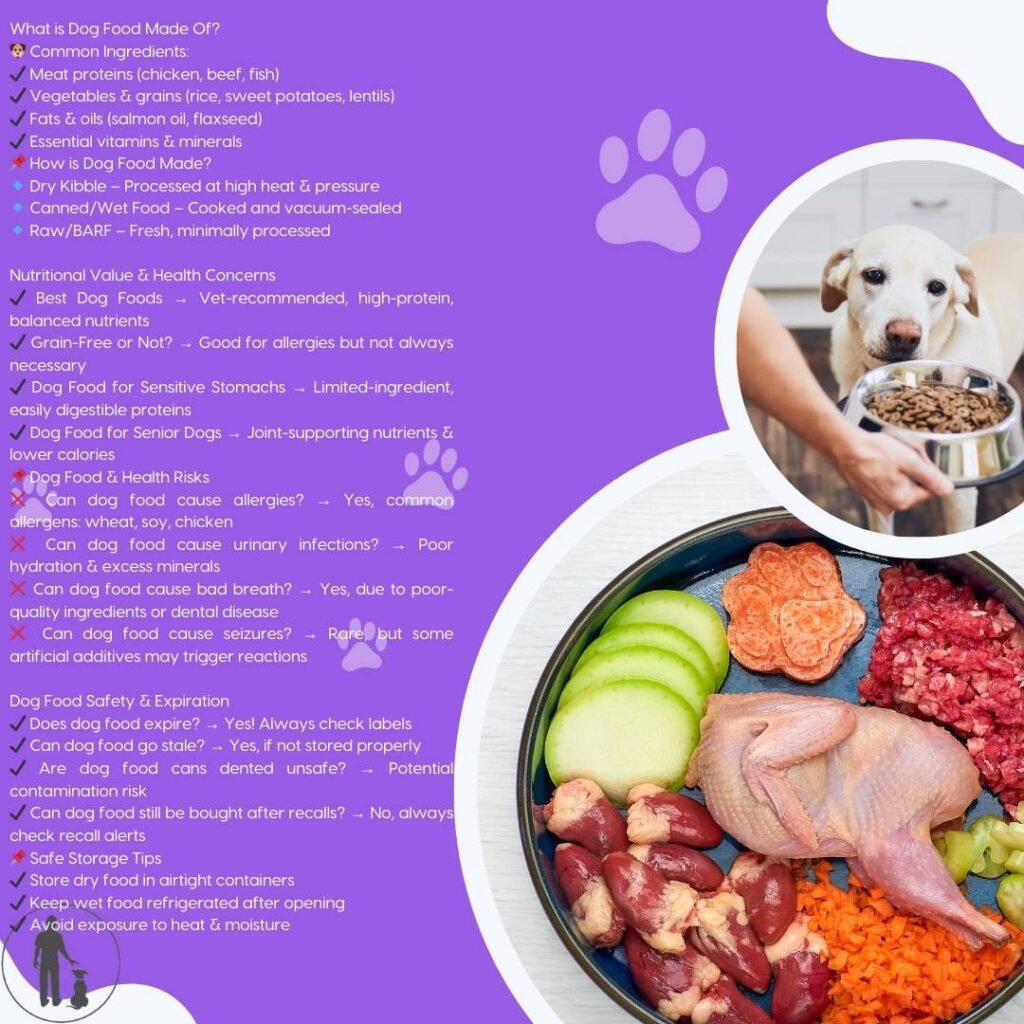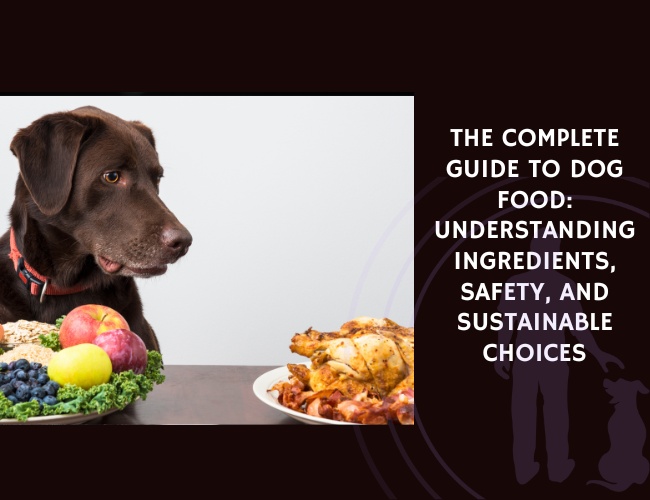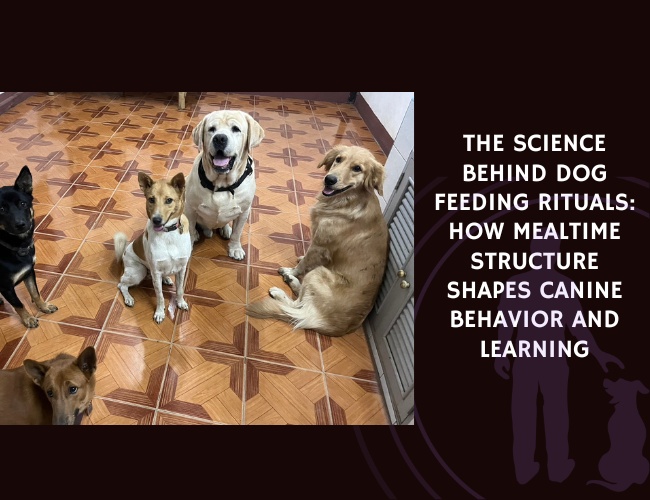Introduction to Commercial Dog Food
Historical Development
The concept of commercial dog food dates back to the mid-19th century. Before then, dogs were often fed table scraps or simple homemade diets primarily composed of meat. The introduction of the first commercial dog biscuit in 1860 by James Spratt marked a significant milestone. Spratt’s innovation, which started in England, consisted of a mix of vegetables, meat, and wheat meals shaped into biscuits, revolutionized dog nutrition and set the stage for the commercial pet food industry.
Evolution to Modern Formulas
Early commercial dog foods were basic and not specifically formulated with balanced nutrition in mind. Over time, however, advancements in nutritional science have greatly enhanced dog food formulation. The realization that dogs require a balanced intake of proteins, fats, carbohydrates, vitamins, and minerals led to the development of more sophisticated and nutritionally complete products. Modern dog food companies now produce a range of options, including kibble, wet food, and specialty diets that cater to the unique needs of dogs at different life stages and health conditions.
Importance of Understanding Dog Food Choices
It’s crucial to recognize that the quality and composition of dog food directly impact a dog’s health and wellness. A well-balanced diet supports overall physical health, promotes a healthy coat, strengthens the immune system, and boosts energy levels. Conversely, inadequate nutrition can lead to various health issues, including obesity, dental problems, and nutrient deficiencies. Pet owners must be informed about the different types of dog food available and their specific benefits to make the best choices for their pets.
Understanding the historical context and evolution of dog food helps appreciate the strides made in pet nutrition. Moving forward, recognizing the factors involved in the manufacturing and selection of dog food will further underscore the importance of making informed dietary choices for our canine companions.
Understanding Dog Food Manufacturing
Have you ever wondered how that bag of kibble makes its way from raw ingredients to your dog’s bowl? Let’s dive into the behind-the-scenes process of manufacturing dog food. This journey encompasses the extrusion process, ingredient selection, and adherence to nutritional requirements and regulatory standards.
Overview of the Extrusion Process
The extrusion process is the most common method used in making commercial dog food. Here’s a simplified rundown of how it works:
- Mixing Ingredients: Raw ingredients such as meat, grains, and vegetables are selected based on nutritional value and mixed.
- Preconditioning: The mixture is heated and mixed with water. This helps to create a dough-like consistency.
- Extrusion: The dough is forced through a machine known as an extruder that cooks the mixture under high pressure and temperature. It’s then shaped into kibble.
- Drying and Cooling: The kibble must be properly dried to prevent spoilage and then cooled. This ensures it maintains its structure and nutritional integrity.
- Coating: In the final stage, oils, fats, and sometimes vitamins are sprayed onto the kibble to enhance flavor and nutritional value.
This precise method helps in preserving essential nutrients and ensures the food remains safe for consumption.
Key Factors in Ingredient Selection and Quality Control
Selecting the right ingredients is crucial in making high-quality dog food. Here are the main considerations:
- Nutritional Value: Ingredients must meet the nutritional requirements set for dogs. This ensures dogs receive the necessary proteins, fats, vitamins, and minerals.
- Quality and Source: The quality of ingredients can significantly affect the end product. High-quality, ethically sourced ingredients create safer and more nutritious foods.
- Regulatory Standards: Dog food manufacturers must comply with strict regulations to ensure safety and quality. They follow guidelines laid out by organizations such as the Food and Drug Administration (FDA) and the Association of American Feed Control Officials (AAFCO).
Quality control measures are implemented at various stages of the manufacturing process to ensure that only safe and high-quality products reach the consumer. This includes testing for contaminants, ensuring proper cooking times, and monitoring the consistency of the kibble.
Role of Nutritional Requirements and Regulatory Standards in Manufacturing
Regulatory standards play a pivotal role in dog food manufacturing. The regulatory bodies set minimum nutritional requirements that all commercial dog foods must meet. These standards ensure:

- Balanced Nutrition: Each dog food provides an adequate balance of essential nutrients tailored to dogs’ needs.
- Safety: Regular testing and adherence to standards help prevent contamination and ensure the food is free of harmful substances.
- Labeling: Manufacturers must provide accurate labeling to help pet owners make informed choices.
Understanding the complexities of dog food manufacturing can help pet owners make better choices for their furry friends. By following the regulations and standards set, manufacturers provide products that contribute to the overall health and well-being of dogs. Plus, knowing the intricate steps involved in creating that perfect kibble can give you peace of mind when feeding your pet.
And now, having unraveled the manufacturing secrets, it’s time to move ahead and discover how essential nutrients and quality indicators play a key role in dog food selection.
Essential Nutrients and Quality Indicators
Importance of High-Quality Protein Sources and Balanced Nutrients
When it comes to choosing the best food for your dog, high-quality protein sources are indispensable. Proteins from animal sources like chicken, beef, and fish provide the essential amino acids required for muscle maintenance, immune function, and overall health. Balanced nutrients including healthy fats, vitamins, and minerals ensure your pet gets a well-rounded diet. Avoiding fillers, such as corn and soy, which offer little nutritional value, can make a significant difference in your dog’s health and longevity.
Key Differences Between Premium and Budget Food Options
Not all dog foods are created equal. Premium dog foods often contain higher quality ingredients with minimal fillers and artificial additives. These brands focus on whole food sources and are more likely to include specific formulations to cater to breed-specific or health-related needs. Brands like Orijen and Acana, for example, use high-quality protein sources and are often recommended for their balanced formulas .
How to Evaluate Nutritional Value through Ingredient Lists
Understanding ingredient lists can be the key to making informed dog food purchases. Here are some tips:
- First Ingredients: Check the first three to five ingredients listed. High-quality dog food should have a specific meat or meat meal as the first ingredient.
- Avoid Fillers: Ingredients like corn, wheat, and soy are often used as fillers and offer limited nutritional value.
- Look for Nutrients: Ensure the food contains essential fatty acids from sources like fish oil or flaxseed for healthy skin and coat. Vitamins and minerals, such as Vitamin E and zinc, should also be listed to support overall health.
- Artificial Additives: Avoid foods with artificial colors, flavors, and preservatives (BHA, BHT, ethoxyquin).
The American Feed Control Officials (AAFCO) provides guidelines for nutritional adequacy, so ensure that the food adheres to their standards. Being vigilant about these aspects can greatly enhance the quality of your dog’s diet.
When selecting the best food for your dog, these factors contribute to making an informed decision. By prioritizing high-quality ingredients, avoiding unnecessary fillers, and understanding what’s on the label, you can make choices that promote long-term health and happiness for your furry friend.
Breed-Specific and Life Stage Nutrition
Choosing the right food for your dog involves understanding their specific needs at different life stages and for various breeds. Knowing what to feed puppies, adults, and senior dogs can significantly impact their health. Let’s dive into how to tailor your dog’s diet effectively.
Specialized Formulas for Different Breed Sizes and Needs
It’s essential to note that different breeds have unique dietary requirements due to variations in size, metabolism, and health issues. For instance:
- Small Breeds: Smaller dogs, like Chihuahuas, often require calorie-dense food due to their high metabolism. Their kibble should be appropriately sized for their small mouths.
- Large Breeds: Larger dogs, such as Great Danes, need food that promotes joint health and controls growth rates to prevent conditions like hip dysplasia.
- Breed-Specific Needs: Certain brands, such as Royal Canin and Hill’s Science Diet, offer breed-specific formulations. These diets take into account common health issues and nutritional needs specific to breeds.

Transitioning Between Puppy, Adult, and Senior Dog Foods
Dogs have different nutritional needs as they age. Transitioning your dog’s diet at the right times ensures they get the necessary nutrients for each life stage.
- Puppies: Puppies need high-calorie food to support their rapid growth and development. Typically, they transition to adult food around 12 months, though larger breeds might need a longer puppy diet period.
- Adults: Adult dogs (1 to 7 years old) require a balanced diet that maintains health without contributing to weight gain. This means controlling calorie intake and ensuring a mix of proteins, fats, vitamins, and minerals.
- Seniors: Senior dogs (7 years and older) benefit from diets lower in calories yet rich in nutrients supporting joint health and digestion. Special formulations can aid in maintaining ideal weight and addressing age-related health issues.
Role of Veterinary-Recommended Diets for Specific Health Conditions
Veterinarians often recommend specialized diets for dogs with specific health conditions. Brands like Hill’s Prescription Diet and Royal Canin Veterinary Diet provide targeted solutions for issues like food allergies, gastrointestinal problems, or urinary health.
- Allergies and Sensitivities: Limited ingredient diets or hypoallergenic formulas can help manage food allergies and sensitivities.
- Gastrointestinal Health: For dogs with digestive issues, diets with easily digestible ingredients and prebiotics can support gut health.
- Weight Management: Overweight dogs benefit from low-calorie diets that still provide balanced nutrition, helping them lose weight safely.
Transitioning and adapting your dog’s diet is a continuous process that ensures their health and vitality. Keeping an eye on their breed-specific needs and life stage requirements sets the foundation for a happy, healthy dog.
Let’s move forward by focusing on how to ensure the safety and freshness of your dog’s food.
Safety and Storage Considerations
Properly storing your dog’s food is paramount to maintaining its freshness and ensuring your pet’s health. Here, we explore key storage tips, understanding expiration dates, signs of food deterioration, and the importance of food safety practices.
Proper Storage Techniques
To maintain the quality of dog food, the right storage conditions are essential. Here are some practical tips:
- Use Airtight Containers: Dog food can go stale if exposed to air. Airtight containers help keep the food fresh by preventing exposure to moisture and air, which can lead to staleness and spoilage.
- Store in a Cool, Dry Place: Temperature and humidity can significantly impact dog food quality. Store the food in a cool, dry location away from direct sunlight and moisture to prevent degradation and mold growth.
- Avoid Contaminated Surfaces: Always keep the container clean and avoid placing it on dirty or damp surfaces. This prevents contamination and the growth of harmful bacteria.
- Keep the Packaging: Place the original bag within the storage container. The packaging often contains important information, including expiration dates and lot numbers, which can be important in case of recalls.
Understanding Expiration Dates and Signs of Deterioration
Dog food, like human food, has an expiration date. Consuming food past this date can pose health risks. Here’s how to understand and identify signs of deterioration:
- Check the “Best By” Date: This date indicates the time frame in which the food maintains its nutritional value and safety. Consuming dog food past this date isn’t recommended as it might lose its nutritional quality or become unsafe.
- Signs of Spoilage:
- Off Smells: Fresh dog food should have a pleasant, meaty aroma. If it smells rancid or sour, it’s likely spoiled.
- Discoloration: Changes in color can indicate oxidation or contamination. Fresh food should maintain its original color.
- Changes in Texture: Moist or clumpy kibble can indicate exposure to moisture and potential mold growth. Dry food should be crisp and consistent in texture.
Importance of Food Safety and Handling Practices
To prevent foodborne illnesses and ensure your pet’s health, adhere to these food safety practices:
- Clean Food Bowls Regularly: Bacteria can build up in food bowls. Washing the bowls with hot, soapy water after each meal helps prevent contamination.
- Avoid Mixing Old and New Food: Combining old food with fresh food can contaminate the new batch, leading to spoilage. It is always better to discard any remaining old food.
- Handle Food Properly: Wash your hands before and after handling dog food to prevent the spread of bacteria.
- Pest Prevention: Improperly stored dog food can attract pests like ants and mice. Ensure that food is stored in sealed containers and in areas free from pests.
By following these guidelines, you can help maintain the quality and safety of your dog’s diet, ultimately contributing to their overall health and well-being.
This understanding of proper safety and storage considerations is crucial as we delve deeper into specific health concerns related to diet and the role of specialized diets in managing conditions.
Common Health Concerns and Dietary Solutions
A major aspect of caring for your dog’s health includes understanding and addressing common health concerns through their diet. This approach can significantly improve your dog’s quality of life and help manage various conditions.
Addressing Food Allergies and Sensitivities
Food allergies and sensitivities are common in dogs and can cause discomfort and health issues. Symptoms include itching, ear infections, gastrointestinal disturbances, and even behavioral changes. Identifying and eliminating the offending ingredient in your dog’s diet is crucial for managing these conditions.
Common Allergens
Common allergens in dog food include:
- Beef
- Dairy products
- Wheat
- Chicken
- Corn
- Soy
Switching to a limited ingredient diet or hypoallergenic dog food can often make a significant difference. Grain-free diets may also benefit some dogs with specific allergies or sensitivities. However, it’s essential to balance grain-free options with the potential nutritional benefits of grains, which provide essential nutrients and fiber.
Relationship Between Diet and Common Health Issues
Diet plays a significant role in many common health issues encountered by dogs. A nutritionally balanced diet tailored to your dog’s specific needs can help prevent and manage these problems effectively.
- Skin Issues and Coat Health: High-quality food rich in omega-3 and omega-6 fatty acids helps maintain a healthy coat and skin. Foods containing high levels of artificial additives and low-quality fillers can exacerbate skin conditions.
- Urinary Health: Diets low in moisture and high in magnesium can contribute to urinary tract infections (UTIs). Selecting foods specifically formulated for urinary health can help manage and prevent these issues.
- Gastrointestinal Problems: Foods high in low-quality proteins and fillers can lead to digestive problems, including diarrhea and constipation. Switching to a diet with easily digestible ingredients and high-quality proteins can alleviate these symptoms.
Role of Specialized Diets in Managing Specific Health Conditions
Veterinary-recommended diets play a crucial role in managing various health conditions in dogs. These diets are formulated based on scientific research to address specific nutritional needs and health concerns.
Diets for Sensitive Stomachs
For dogs with sensitive stomachs, limited ingredient diets or those designed for digestive health are recommended.
Senior Dog Diets
Senior dogs often benefit from specialized diets lower in calories and enriched with joint-supporting nutrients. These diets support overall health and manage age-related conditions, including arthritis and weight control.
Weight Management
Obesity is a common issue in dogs, leading to various health problems, including diabetes and joint issues. Weight management diets are formulated to provide balanced nutrition while reducing caloric intake, helping your dog maintain a healthy weight.
Dental Health
Poor dental health can lead to bad breath and other oral issues. Foods designed to promote dental health often include special kibble shapes that help clean teeth and reduce tartar build-up.
By carefully selecting the right diet and making informed adjustments, you can effectively manage and prevent many common health concerns in your dog. Proper nutrition is key to ensuring your pet lives a healthy and thriving life.
Sustainable and Environmental Considerations
Environmental Impact of Dog Food Production and Packaging
The production and packaging of dog food significantly impact the environment. From sourcing ingredients to processing and transporting, every stage uses resources and produces waste. Traditional dog food production often involves high water usage and greenhouse gas emissions. For instance, the meat production in dog food can contribute to deforestation and methane emissions, exacerbating climate change.
Packaging is another concern. Many dog food bags are made from plastic and multi-layer materials that are hard to recycle. These non-recyclable materials end up in landfills, contributing to long-term pollution. Aluminum cans, while recyclable, still consume substantial energy during production and recycling processes.
Recycling Options for Different Types of Dog Food Containers
Proper disposal and recycling of dog food containers can mitigate some environmental impacts. Here’s how to handle common packaging types:
- Plastic Bags: Check local recycling guidelines, as some municipalities accept certain types of plastic bags. Look for packaging marked with recyclable symbols and ensure they are clean before recycling.
- Multi-layer Bags: Unfortunately, many dog food bags are made from multiple layers of plastic and foil, making them difficult to recycle. In such cases, consider brands that offer take-back recycling programs or compostable packaging.
- Aluminum Cans: Aluminum dog food cans are generally recyclable. Clean the cans thoroughly to ensure they are accepted by recycling programs.
- Paper Bags: Some dog food comes in paper or mixed materials with recyclable inner linings. Check for markings and local guidelines to determine the recyclability.
Choosing Environmentally Conscious Dog Food Options
Selecting dog food with an eye toward environmental impact is a growing priority for many pet owners. Here are some tips to make better choices:
- Sustainable Ingredients: Opt for brands that use responsibly sourced ingredients, such as fish from certified sustainable fisheries or organic produce.
- Eco-friendly Packaging: Look for brands that use recyclable or compostable packaging materials. Companies like Open Farm focus on sustainability throughout their production and packaging processes.
- Local and Organic Choices: Buying from local producers reduces transportation emissions. Organic ingredients often have lower pesticide usage and better environmental practices.
- Transparency and Certifications: Choose brands with clear information about their sourcing and production practices. Certifications like the Marine Stewardship Council (MSC) for fish or the USDA Organic label can help guide your choices.
Shifting toward sustainable dog food options not only benefits the environment but also supports the health of your pet and broader ethical practices in the industry. Balancing these considerations with nutritional quality ensures that your choices contribute positively to the planet while keeping your furry friend healthy.
Making Informed Purchasing Decisions
Evaluating Cost Versus Nutritional Value
Selecting the right dog food can feel like a daunting task given the plethora of choices available in the market. Many pet owners aim to strike a balance between cost and nutritional value, which can be challenging. It’s important to understand that nutritional value can vary significantly among different brands and types of food. Generally, higher-quality dog foods are crafted using a high percentage of animal protein and wholesome ingredients, free from fillers and artificial additives. These options, while sometimes more expensive, provide better health benefits for your furry friend. Brands like Orijen and Wellness, known for their quality ingredients, can often justify their price by offering balanced nutrition that may support overall health more effectively than budget options.
Understanding Product Recalls and Safety Monitoring
Safety should be a top priority when purchasing dog food. It’s crucial to remain informed about product recalls, as contamination and other issues can compromise your dog’s health. Regularly checking resources, such as the Food and Drug Administration (FDA), can keep you updated about any known issues with dog food products. Trustworthy brands often exhibit transparency about their ingredients and processing methods, which can be a good indicator of their commitment to safety. Choosing brands that are open about their quality control processes and recall history can avoid unnecessary health risks for your pet.
Balancing Budget Constraints with Quality Requirements
While premium dog foods may offer superior nutrition, they might not always fit within every pet owner’s budget. It’s about finding the right balance. The key is reading labels carefully. Look for whole food ingredients and avoid unnecessary additives that may trigger allergies or sensitivities in your pet. Incorporating food toppers can also be a practical way to boost the nutritional content of a more economical base diet.
With a little research and careful selection, you can find a dog food option that fits within your budget while still meeting your pet’s health needs. Transitioning smoothly from purchasing decisions to understanding the implications of these choices on your dog’s health is key in ensuring a well-rounded approach to their dietary management.
Now that you’ve journeyed through the fascinating history and complex process of dog food manufacturing, it’s clear that every kibble and can of wet food is more than just a meal—it’s a testament to the evolution of pet care. Your dog’s health and happiness are in your hands, quite literally, with every bowl you serve.
So, take a moment to reflect on the knowledge you’ve gained. Are you ready to elevate your dog’s diet to new heights? Explore the labels, ask questions, and don’t hesitate to consult with a veterinarian or pet nutritionist. Your furry friend deserves the best, and you now have the tools to make that happen.
Ready to make a change? Start by checking out our recommended list of top dog food brands that prioritize quality, safety, and sustainability. Your dog will thank you with wagging tails and endless cuddles!









